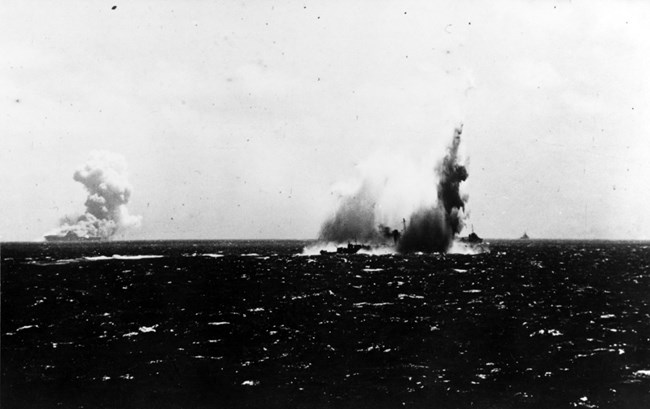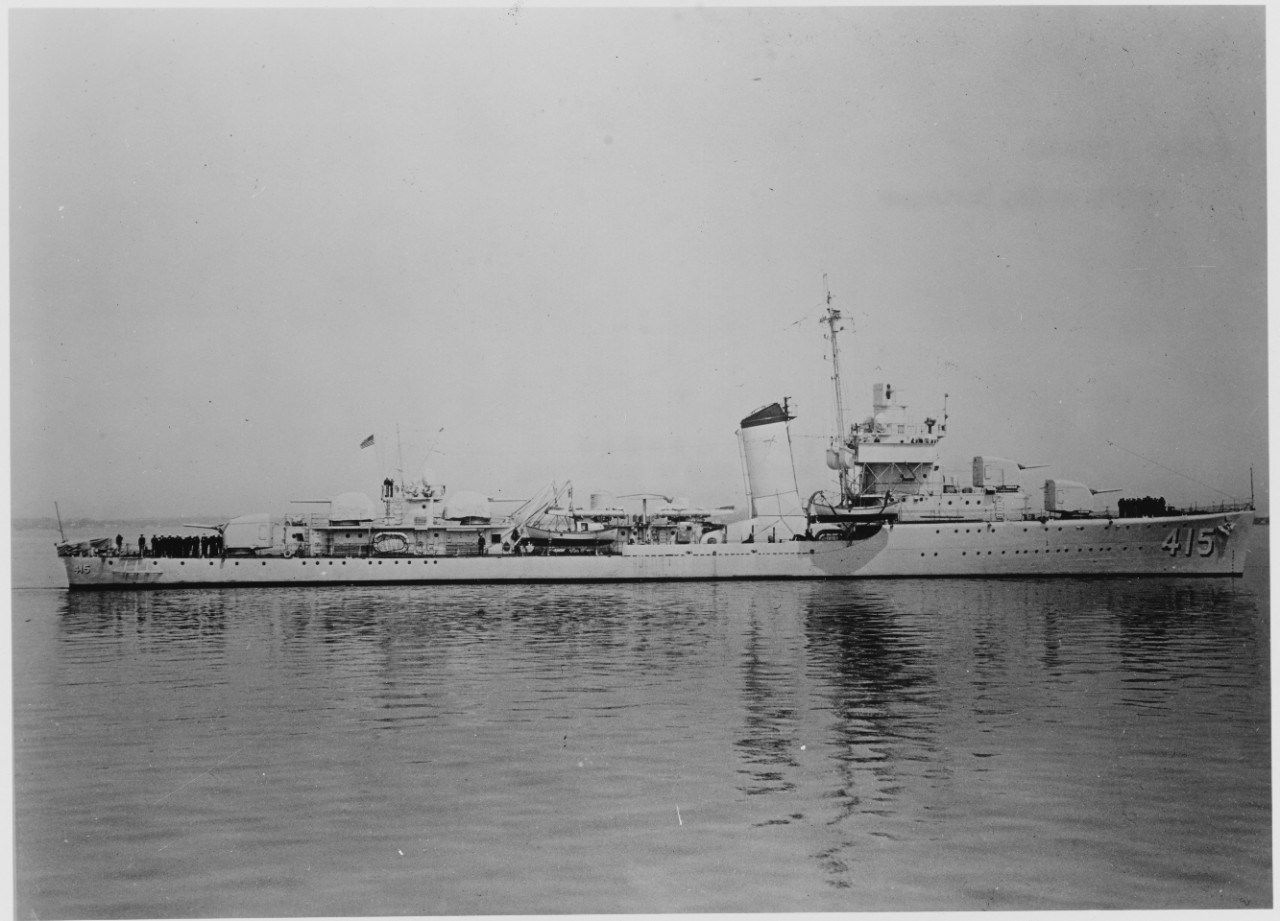Last updated: September 9, 2023
Article
USS O'BRIEN
During the 1930s, the Charlestown Navy Yard (Boston Navy Yard) began construction of destroyers, a class of ship which became the Yard's specialty until its closure in 1974. Sims-class Destroyer USS O'Brien (DD-415), named in honor of Revolutionary War hero Captain Jeremiah O'Brien, played an important role for the United States Navy during World War II.
Commissioning and Service
USS O'Brien launched on October 20, 1939 at the Boston Navy Yard. The US Navy commissioned the ship March 2, 1940, under the command of Lt. Cdr. Carl F. Espe, who later returned to the Navy Yard as Commandant of the First Naval District. First assigned to the Atlantic Fleet, the destroyer carried out patrol and convoy escort duties in the Atlantic Ocean. In this role, the ship protected British supply routes to Canada from enemy submarines and surface vessels. With the outbreak of World War II in the Pacific, the Navy reassigned USS O'Brien to the Pacific Fleet. In early 1942, the ship sailed to the Pacific Theater, where it played a role in one of the most important battles of the war, The Battle of Guadalcanal.

Official U.S. Navy Photograph, now in the collections of the National Archives. 80-G-457818.
Final Fate
During the Guadalcanal Campaign, Japanese submarines I-15 and I-19 torpedoed USS O’Brien on September 15, 1942. These submarines also destroyed USS Wasp (CV 7) minutes prior, and also struck USS North Carolina (BB-55). After a damage assessment, USS O’Brien received independent orders to proceed to Espiritu Santo to receive temporary repairs, arriving at port the following day. Six days later, on September 21, USS O'Brien made its way to Nouméa, where ship tenders patched up the rest of the damage. Upon completion of the repairs, a naval constructor approved the destroyer as capable for a voyage back to The United States.
The damage turned out to be far worse than at first thought. On October 19, while off Samoa en route to San Francisco, the ship seized, coming apart at the seams, and sank. The crew abandoned the ship, fortunately with no loss of life. USS O'Brien is one of many destroyers that did not make it back to US shores during the war.
Contributed by: McKinzie Schultz, Student Conservation Association Historic Preservation Corps Member
Sources
Destroyer Photo index DD-415 USS O’Brien, 2017. http://www.navsource.org/archives/05/415.htm.
Roscoe, Theodore. "Chapter 14, Solomons Crucible (The Guadalcanal Campaign)." Essay. In United States Destroyer Operations in World War II, 178–79. Annapolis: United States Naval Institute, 1982.
"O'Brien III (DD-415)." Naval History and Heritage Command. Accessed September 9, 2023. https://www.history.navy.mil/research/histories/ship-histories/danfs/o/o-brien-dd-415-iii.html.
"USS O'Brien DD415 War Damage Report No. 28." Naval History and Heritage Command, January 21, 2016. https://www.history.navy.mil/content/history/nhhc/research/library/online-reading-room/title-list-alphabetically/w/war-damage-reports/uss-obrien-dd415-war-damage-report-no-28.html.
"USS O'Brien (DD-415), Sims-Class Destroyer in World War II." Destroyer History Foundation. Accessed September 8, 2023. https://destroyerhistory.org/goldplater/ussobrien/.

